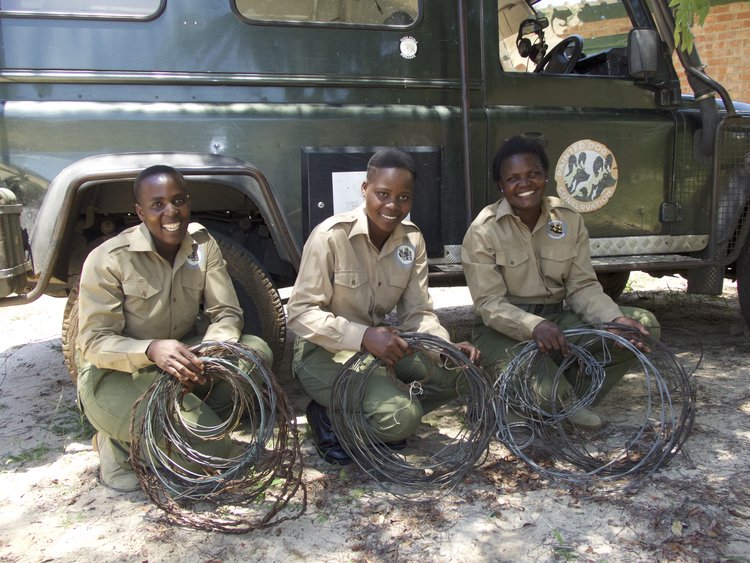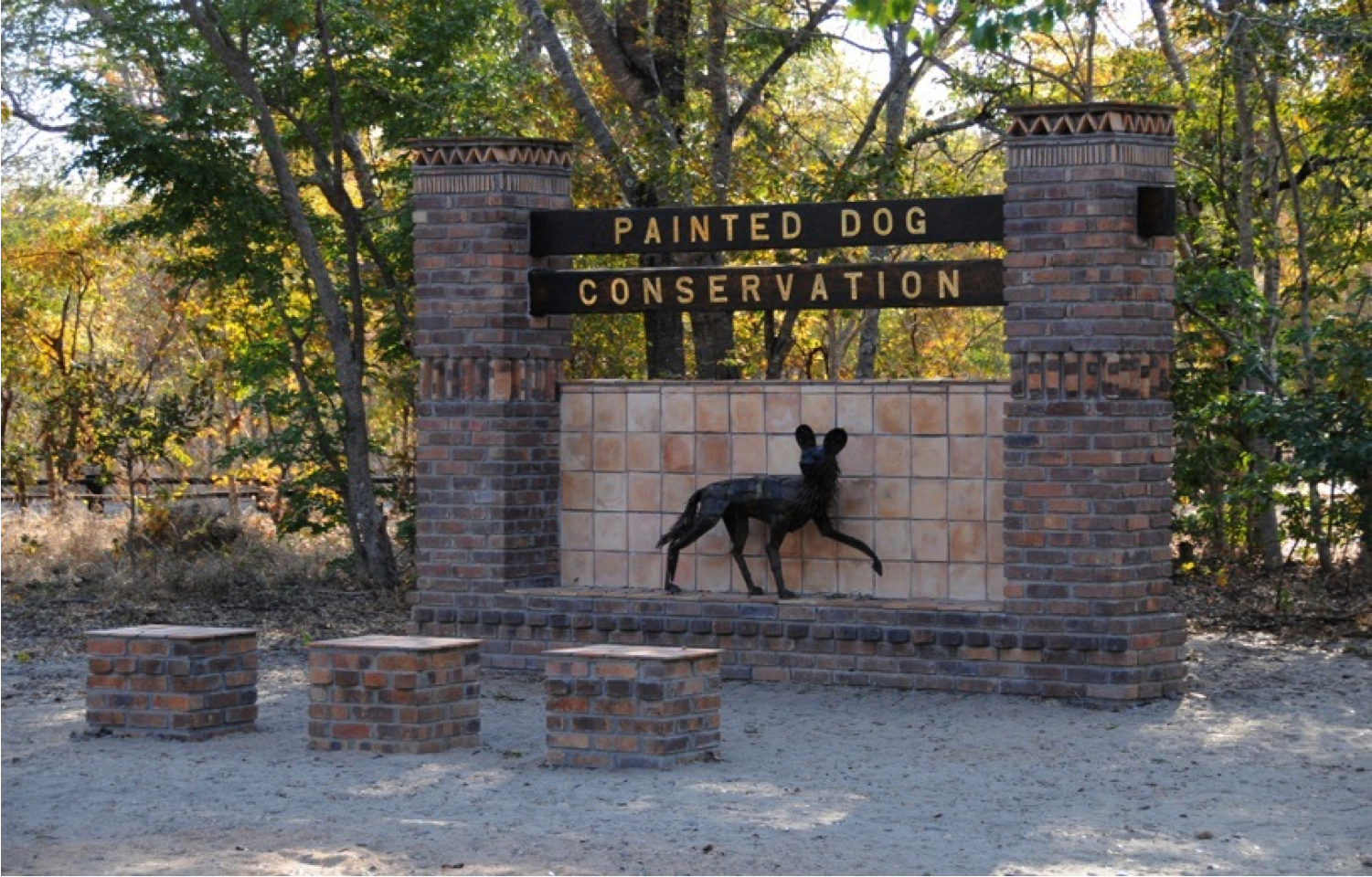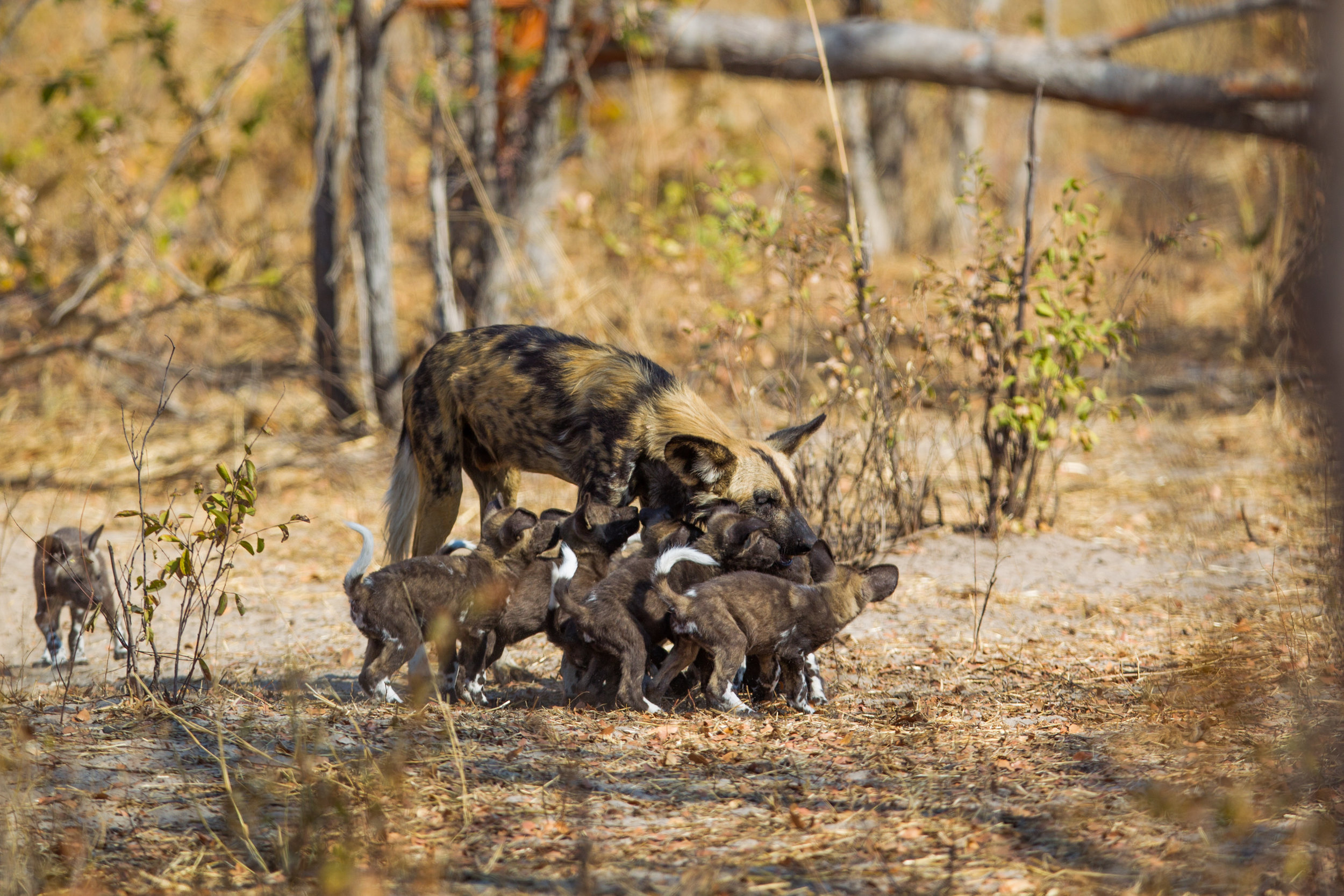Painted Dog Conservation
..through action and education.
Painted Dog Conservation - creating an environment where painted dogs can thrive.
“Saving painted dogs is about far more than just the dogs. Really, it’s all about people.” — PETER BLINSTON, PDC EXECUTIVE DIRECTOR
They may not be as famous as their trunked, horned, or maned neighbours, but these painted dogs —also known as African wild or hunting dogs—are beautiful, unique, and fascinating social animals.
Painted dogs are native to Africa, and aren’t found in the wild anywhere else on the planet. They live in small pockets across a handful of countries including Zimbabwe, the home of Painted Dog Conservation.ABOUT PAINTED DOG CONSERVATION
Our mission is to create an environment where painted dogs can thrive.
We have put together a conservation model that will really work in the long term, and make a significant difference to the painted dog population in Zimbabwe. We employ more than 60 people from the local villages to run our conservation programs and run our education and outreach programs. These efforts span everything from our Anti-Poaching Unit team which patrol local areas daily to provide a direct form of protection for the dogs, we run our Rehabilitation Facility where we treat injured and orphaned dogs before returning them to the wild. We monitor more than 6 packs of painted dogs on a daily basis across Hwange National Park and 4 packs in Mana Pools and the Mid-Zambezi. In addition to helping painted dog populations, we want to help human ones, too. Our education and outreach programs prioritise community spirit. We have established projects and programs that directly help improve the lives of local residents. To this end we’ve set up a Children's Bush camp, a Visitors Centre, collaborative art projects, conservation clubs, community gardens, and more. PDC evolved out of pure scientific research being conducted in Hwange National Park in the mid 1990s. It soon became apparent that vast majority of painted dog deaths outside of Hwange National Park were found to be due to human causes—snares, traffic accidents, shootings—led by a general ignorance and prejudice towards the species. This cemented our core approach to helping painted dogs, which remains the same today: to identify the critical issues and find a way to make a significant and lasting contribution to painted dog conservation, conservation of nature, and the lives of the local community with a special emphasis on the individual.CONSERVATION PROGRAMS
Around a century ago, there were roughly half a million painted dogs in Africa. Today the species has been decimated — and entirely wiped out in two-thirds of the countries it used to call home. We’ve been working to protect the local painted dog population here in Zimbabwe for over two decades.There are a few key ways in which we try to conserve and protect the species.Anti-poaching
The first three female scouts of our Anti-Poaching Unit team. L to R: Debra Maphosa first volunteered with the Mabale Volunteer APU in 2014 then joined PDC in January 2017, Belinda Ncube joined PDC in 2017 and Simisiwe Ngwenya also volunteered to undertake anti poaching work with the Mabale Volunteers in 2014 then joined PDC in 2017.
Snares used for poaching are one of the key threats facing the painted dogs today. Zimbabwe's economy has been struggling and this has increased illegal hunting of wildlife to sell for profit as bushmeat. This impacts many species, but the painted dogs are particularly vulnerable because they cover relatively huge distances each day compared to most species and consequently encounter many more snares. To combat this, we employ scouts (both male and female) in our Anti-Poaching Unit. These highly trained scouts work closely with the Zimbabwe Parks & Wildlife Management Authority and Forestry Commission patrolling areas bordering Hwange National Park on a daily basis. Since 2001, we’ve collected more than 30,000 snares—enough to kill roughly 3,000 animals—and have managed to keep poaching within the area under reasonable control. REALLY CAN’T OVERSTATE HOW IMPORTANT THESE UNITS ARE. POACHING IS STILL RIFE THROUGHOUT ZIMBABWE, ESPECIALLY WITHIN AND AROUND HWANGE NATIONAL PARK. THE DEATH OF A SINGLE PAINTED DOG CAN BE THE DIFFERENCE BETWEEN A PACK SURVIVING AND A FAMILY FALLING APART.” — PETER BLINSTONThe Rehabilitation Facility
In 2002, we opened the PDC Rehabilitation Facility. This facility has eight different enclosures plus a veterinary clinic and allows us to house and care for injured, sick or orphaned painted dogs with minimal handling until they recover enough to rejoin their families in the wild. We also use the facility to house painted dog packs that are at risk from hostile landowners and other threats, keeping them safe while we find them a new permanent home elsewhere in Zimbabwe.
“OUR ETHOS IS TO REDUCE THE PAINTED DOGS’ SUFFERING AS FAR AS POSSIBLE, AND GIVE INJURED PAINTED DOGS THE OPPORTUNITY TO RECOVER WITHOUT FEAR OF BEING VULNERABLE IN THE WILD, OR BECOMING A BURDEN ON THEIR PACK. WHENEVER, WHEREVER, AND HOWEVER WE CAN HELP, WE DO.” — PETER BLINSTON Using the Rehabilitation Facility we keep painted dog numbers up, ensure the safety of threatened packs and educate the public via organised visits to try to improve perception of the painted dogs.Pack Monitoring
A deep understanding of the painted dogs underpins everything we do. To this end we monitor painted dog packs using state-of-the-art radio collars to track their behaviour and hunting patterns, identify any causes of injury or death, and keep a close eye on packs we deem particularly vulnerable or in unsafe areas. This data is compiled into a digital identity register for our painted dogs—complete with photo IDs—that locals, tourists, and members of the public have helped us to build and expand.
We take samples of blood, faeces, and tissue for DNA analysis and to screen for infectious diseases or parasites, and use the results to develop future management plans. “This has a positive knock-on effect: when painted dogs are collared and tracked we can control, manage and understand them better, which in turn relieves the stress and fear of any landowners perceiving them as a pest or threat, and helps to stop the spread of misinformation.” — PETER BLINSTON, PDC EXECUTIVE DIRECTORThreats & Challenges
The biggest threats to painted dogs come from humans. The painted dogs are injured and killed in snares, road kills and expanding human settlement reduces suitable habitat for them and their prey.
They are also susceptible to diseases such as rabies and distemper from domestic dogs.Painted dogs don’t have the best reputation in Africa— through no fault of their own.
Human ignorance and misinformation is perhaps one of the biggest issues facing the painted dog population. Local landowners believe them to be dangerous, numerous, wanton and indiscriminate pack hunters, and thus best removed from their land. Our education and conservation programmes aim to tackle these issues, and bring painted dogs back from the brink of extinction. “A disease can permeate an entire group through just one dog, and wipe out a whole pack. Identifying and containing disease is an integral part of our work.” — PETER BLINSTON.Courtesy: Painted Dog Conservation - https://www.painteddog.org/>
ARTICLES OF INTEREST
Honouring Senior Tracker Jealous Mpofu's 25 years of service - March 2023 (video).
Painted Dog Conservation Annual Report 2022 (PDF).


